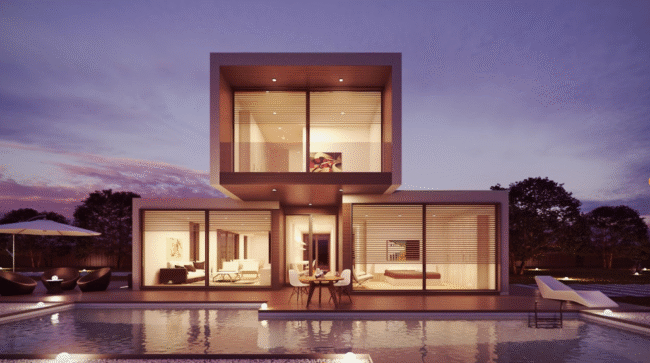
Industrial-style homes have special features that make them unique. People like to leave things like beams, pipes, and air vents showing to show off the building’s old, factory-like look.
The rooms are big and open. This makes the house feel bright and spacious.
These homes often use strong materials like metal, concrete, and old wood to give them a cool, rough look. They also have big windows that let in lots of sunlight and help you see and feel closer to the outside world.
Find out more.
The Historical Context of Industrial Architecture
Industrial architecture started in the late 1700s during the Industrial Revolution. Back then, people built factories and warehouses to be strong and useful.
These buildings were made with tough materials like steel and concrete. This gave them a simple and bold look that many people like today.
In the mid-1900s, some of these old, empty buildings started to catch the eye of creative homeowners and builders. Instead of tearing them down, they turned them into cool homes, keeping the original look.
This started a trend of turning old work buildings into places where people live. It’s now becoming popular in many cities.
Just take a look at neighborhoods such as downtown Pitt, where former warehouses now serve as chic lofts. It showcases the blending of historical charm with contemporary amenities. This adaptive reuse of industrial buildings reflects a cultural shift that values sustainability and unique architectural identity.
Key Features of Industrial Residential Design
Today, the fusion of industrial architecture with residential design creates homes that stand out in the crowd. Some prominent features include:
- Exposed Structures
- Large Open Spaces
- Utilitarian Materials
- Large Windows
- Natural Light
These elements come together to create unique and personalized living environments that reflect both style and substance.
Contemporary Influence and Trends
As urban living spaces continue to evolve, the demand for industrial-style homes has surged tremendously. Many young professionals are drawn to these residences due to their distinct aesthetic that differentiates them from traditional homes.
Additionally, interior designers have adopted the industrial look by balancing it with modern touches. Contemporary furnishings often juxtapose the hard edges of industrial design. This creates a harmonious blend that appeals to a broader audience.
Modern architecture plays well with industrial elements. It embodies elegance and comfort.
A Sustainable Approach
The trend also takes a sustainable turn as more homeowners opt for upcycled materials. It reduces waste and embraces eco-friendly practices. By transforming industrial buildings, individuals help preserve a part of history while contributing to environmental sustainability.
The remodeling of former factories and warehouses signifies a shift toward sustainable living and a reduction in sprawl. This makes it economically and ecologically beneficial.
Final Insights Into Industrial Architecture
Industrial architecture is more than just a cool way to design homes. It shows how our ideas about living spaces have changed over time.
People now see the beauty in old buildings and strong materials like brick, steel, and wood. This style has helped shape the way homes and cities look today.
Whether you want to live in an industrial-style home or just think it looks nice, you’re part of a fun and exciting design trend. It mixes the best parts of the past with the comfort of modern living.
Explore Your Options
As you embark on your journey to explore industrial architecture, consider reaching out to local design experts who can guide you in transforming your vision into reality. Embrace the elements that define this unique aesthetic. Create a living space that embodies both functionality and creativity.
For more home improvement tips, check out our blog posts.
